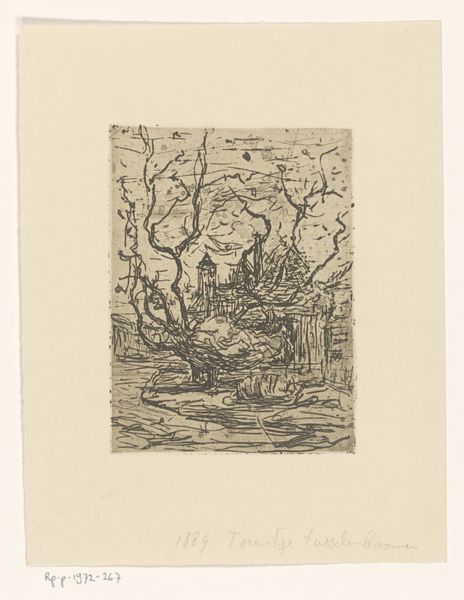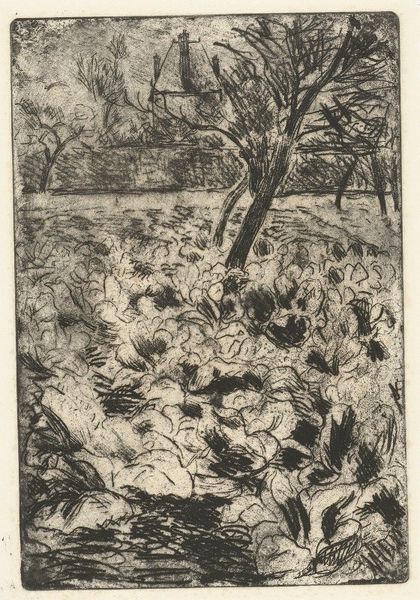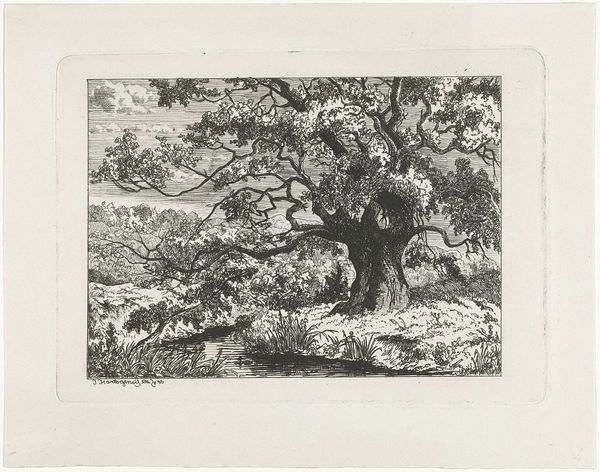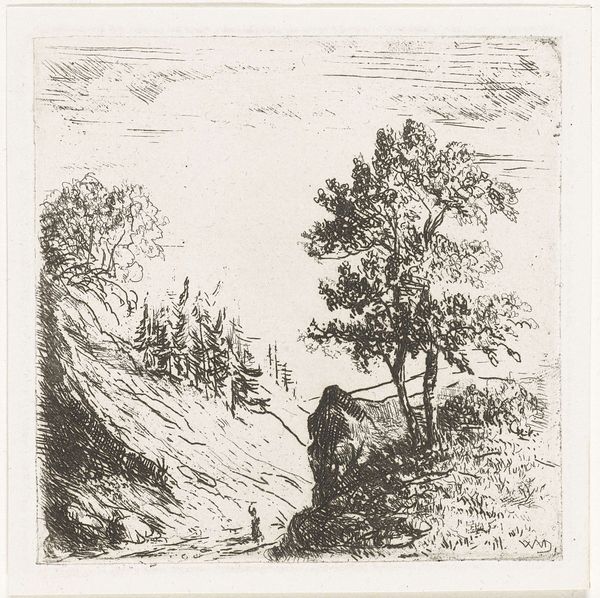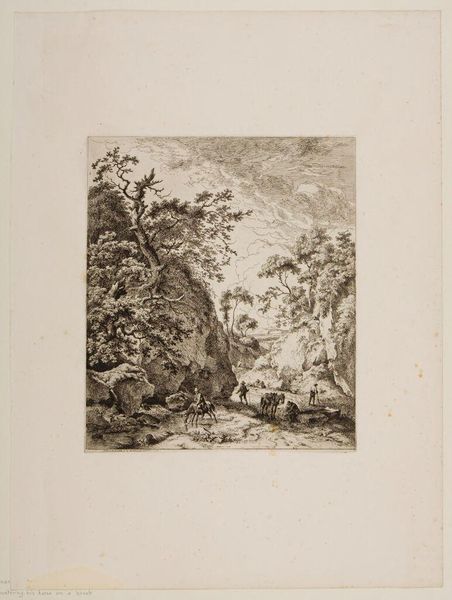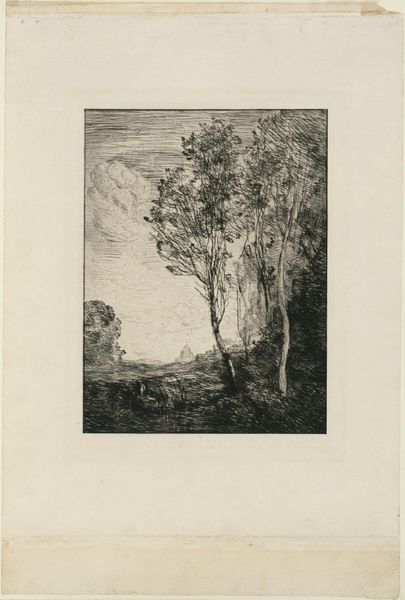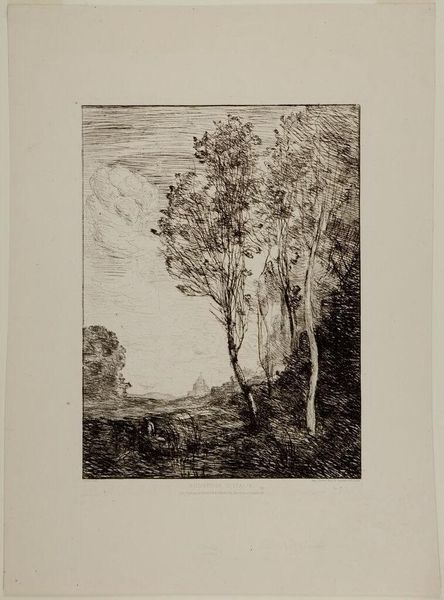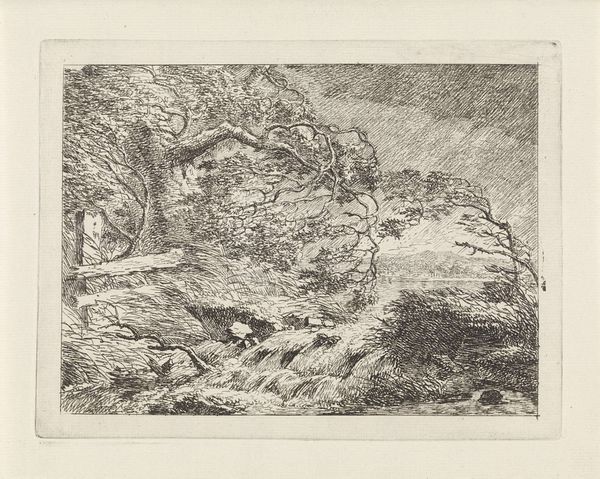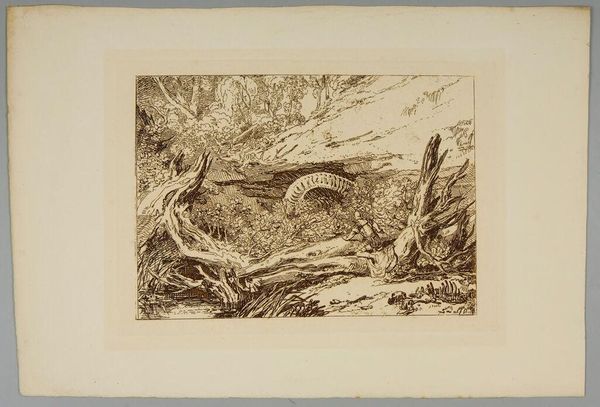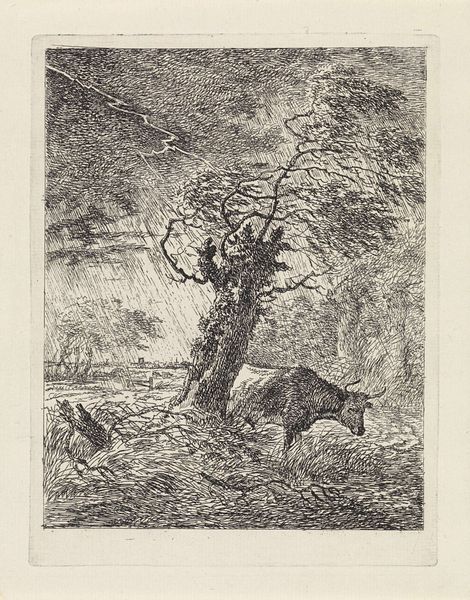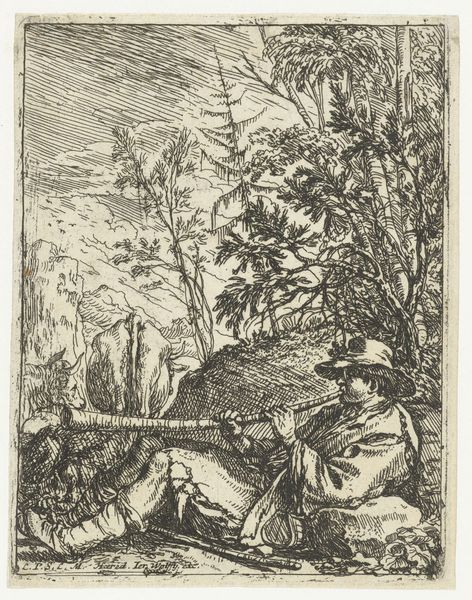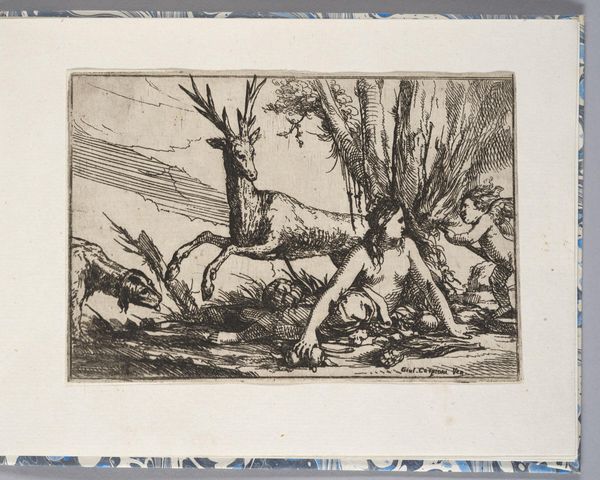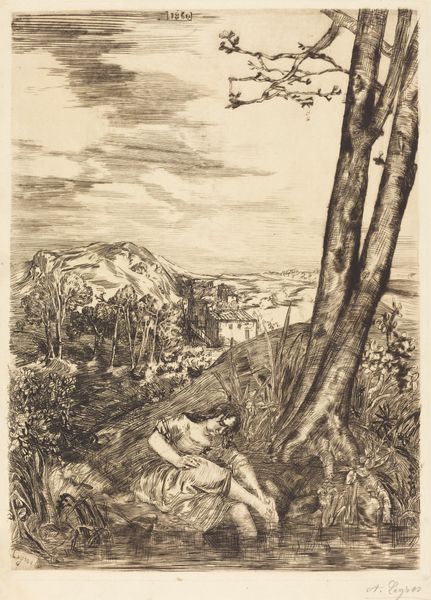
The End of the Day 1908
Dimensions: 21.1 x 14.4 cm (8 5/16 x 5 11/16 in.)
Copyright: CC0 1.0
Curator: This is Auguste-Louis Lepère’s “The End of the Day,” a striking black and white print held here at the Harvard Art Museums. Editor: It's immediately evocative—the density of the ink creates a mood of exhaustion and quiet resignation. The scene feels weighted down. Curator: Note how the artist uses stark contrasts. Lepère masterfully conveys the weariness of agricultural labor through the stooped figures and the heavy, dark trees dominating the composition. Editor: The bending trees could symbolize the bending of human will under harsh conditions. I’m curious about the social commentary—is Lepère portraying the plight of the rural working class? Curator: It’s possible. Consider the artistic context; Lepère was part of a movement interested in portraying everyday life. The image embodies themes of perseverance and the cyclical nature of human existence, framed within a landscape of enduring natural forms. Editor: Looking at it now, I feel a deep connection to the historical experience of laborers, and that feeling gives the image a powerful human dimension. Curator: For me, the somber stillness emphasizes the enduring connection between humanity and the land.
Comments
No comments
Be the first to comment and join the conversation on the ultimate creative platform.
